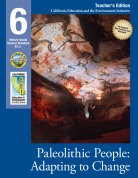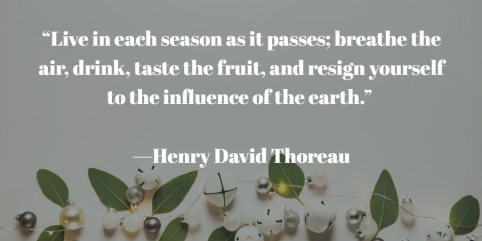Dear Educator,
The end of the year marks an opportunity for all of us to reflect upon our accomplishments. We are excited to share with you some of our top highlights from 2019:
- We welcomed more than 4,800 new members into the EEI community.
- We provided over 9,000 EEI Curriculum unit orders to educators throughout the state.
- We hosted a brand-new webinar called “How to Teach Science using Environmental Phenomenon,” which was attended virtually by hundreds of educators.
We could not have done this without your support. Thank you for helping to advance environmental literacy in your classroom and beyond!
Happy Holidays!
The EEI Team
EEI Program Updates
Year-End Holiday Shipping Schedule
To prevent the delivery of packages to closed schools during the winter and New Year holidays, we will be temporarily suspending shipments between December 19- January 3. Orders placed during this period will be delivered the week of January 6. Thank you for your patience and understanding.
Webinar: “How to Teach Science Using Environmental Phenomenon”
Learn how to use environmental phenomena as a focal point for teaching the Next Generation Science Standards (NGSS) while increasing environmental literacy. In the webinar NGSS expert Barbra Woods will walk through California’s Environmental Principles and Concepts (EP&Cs) and how to apply them to environmental phenomena. Then will explore a variety of local phenomena, including landfills, worm bins, and local nature preserves and identify NGSS and EP&C connections.
Environmental Education Resources
CA NGSS Statewide Rollout – Environmental Literacy
These two-day professional learning workshops are geared towards grade K-12 academic coaches, administrators, curriculum leads, and teacher leaders. Participants will experience grade-appropriate learning sequences with an environmental literacy focus and examples of local environmental phenomena. Learn more and register here.
Growing Food in a Changing Climate
By Shelly Brooks Ph.D.
The California History Social-Science Project presents a comprehensively researched article about “Growing Food in a Changing Climate.” Read about the ways that climate change is affecting how food is grown and analyze how current trends may project future problems with food production. Learn ways to discuss this growing problem in the classroom and discover how to integrate EEI units into lessons on this topic.
The Source Magazine, Environmental Literacy in History-Social Science
The Source is a magazine created by the UC Davis California History-Social Science Project (CHSSP), it provides educator driven content such as sample lesson plans, interviews with teachers and scholars, essays on history education and a calendar of upcoming events. The August 2019 issue focuses on Environmental Literacy in History-Social Science, Environmental Justice, Learning in and From the Outdoors and Empowering Eco-literate Global Citizens. The magazine is accessible and available to read online.
Award, Grant, and Contest Opportunities
U.S. EPA Environmental Education Grants
Under the Environmental Education Grants Program, EPA seeks grant applications from eligible applicants to support environmental education projects that promote environmental awareness and stewardship and help provide people with the skills to take responsible actions to protect the environment. This grant program provides financial support for projects that design, demonstrate, and/or disseminate environmental education practices, methods, or techniques.
Deadline: January 06, 2020
The California King Tides Project asks people to take photos of the highest high tides of the year to help visualize future sea-level rise. Students can participate in the citizen science project, as well as view hundreds of photos from past King Tides seasons. Visit the California Coastal Commission website for more details on how to participate in the California King Tides Project.
Deadline: January 12 & February 9, 2020
Presidential Environmental Youth and Innovation awards nominations
The President’s Environmental Youth Award (PEYA) recognizes outstanding environmental projects by K-12 youth. The PEYA program promotes awareness of our nation’s natural resources and encourages positive community involvement. Since 1971, the President of the United States has joined with EPA to recognize young people for protecting our nation’s air, water, land, and ecology. It is one of the most important ways EPA and the Administration demonstrate a commitment to environmental stewardship efforts created and conducted by our nation’s youth.
Deadline: January 15, 2020
California K-12 students are invited to participate in the California Coastal Commission Coastal Art and Poetry Contest. This unique opportunity allows students to develop original works of art that reflect their personal experiences with California marine life on the California coast. Please visit the website for more details.
Deadline: January 31, 2020
Award: $50-$100
World of 7 Billion Student Video Contest
This contest asks 6th-12th-grade students to create a 60-second video about human population growth that highlights one of the following global challenges: Sustaining Water Systems, Ensuring Economic Opportunities, Improving Climate Resiliency; including how growth impacts these issues, and at least one idea for a sustainable solution.
Deadline: February 27, 2020
Award: $250-$1,000
Environmental Storytelling Contest
The contest is open to middle school classrooms across the U.S. the contest asks students to create a video story that tackles real-world environmental problems and proposes solutions for the future. Find out more about Redford Center Stories on the website.
Deadline: March 9, 2020
Award: $100- $300
Coming Together for the Climate video contest
The California Coastal Commission invites California Middle school and High school students to participate in the Coming Together for the Climate video contest. Students are asked to create a video that answers the question: “how do we come together for climate change?” Videos no longer than 3 minutes in length should consider the importance of talking about climate change, the benefits of eliminating the use of fossil fuels, and the protection of coastal communities and habitats. For more information about the rules and how to enter the Coming Together for the Climate video contest please visit their website.
Deadline: March 31, 2020
Award: $100- $300
Environmental Literacy News
EdSource Podcast: Youth Leader Isha Clarke and Ten Strands CEO Karen Cowe
By Kim Moon
EdSource
November 19, 2019
Energy, Gardens, and Engineering: Alameda Elementary Environmental Literacy Summer Institute 2019
By Betsy Mitchell and Joanna Totino
TenStrands
November 4, 2019
Another Victim of the California Wildfires: Education
By Alexa Lardieri
U.S. News
October 31, 2019
Empowering Educators and Students: STEAM and a Catalyst for Agency, Access, and Joy
By Nada Djordjevich and Michelle Drake
TenStrands
October 21, 2019
The Green New Deal and Youth Climate Action
By Lucia Garay
TenStrands
October 4, 2019
Classroom Stories
#ExploreEEI
“They [the EEI Curriculum] augment learning and get students to make connections between the past and the present. The [the EEI curriculum] are practical and raise awareness of the necessity of preserving our ecological landscapes for our future survival.”

—Natalie McCallick, 6th-grade educator, Oxnard School District


